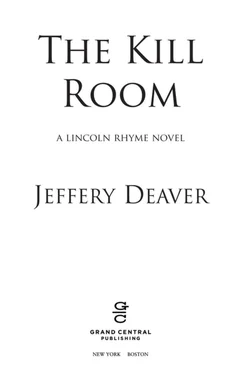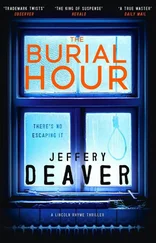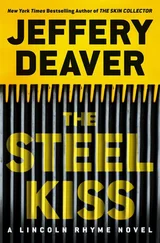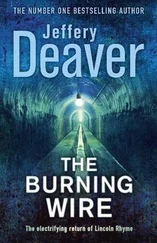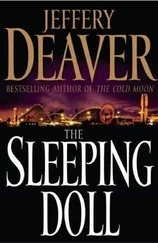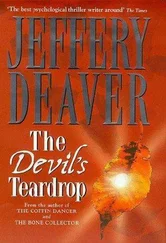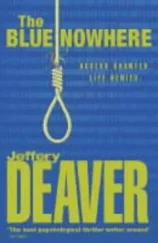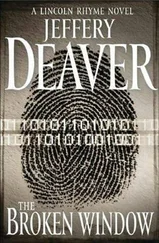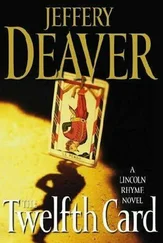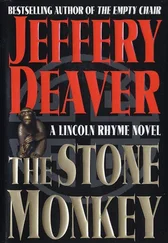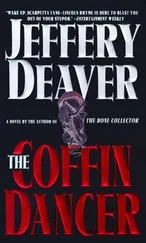“No. Lon’s got a surveillance team on him. They’ll call as soon as they make an ID.”
Another pause. Laurel said, “I’m just curious: Did you think about getting his fingerprints?”
“His—”
“When you were following the sniper downtown? The reason I’m asking is I was working a case once and an undercover detective dropped a glossy magazine. The subject picked it up for her. We got his prints.”
“Well,” Sachs said evenly, “I didn’t.”
Because if I had done that we’d have his fucking ID by now. Which we don’t.
An impenetrably cryptic nod from Laurel.
Just curious…
That was as irritating as “if you don’t mind.”
Sachs turned away from her, wincing slightly, and handed off the evidence from the Lydia Foster crime scene to Mel Cooper, who regarded the slim pickings with the same dismay that Sachs felt.
“That’s it?”
“Afraid so. Unsub Five Sixteen knows what he’s doing.” Sachs was looking at the photos of Lydia Foster’s bloody corpse, which she was downloading from the crime scene team in Queens and printing out.
Lips tight, she stepped to one of the whiteboards and taped the pictures up.
“He tortured her,” Laurel said softly but with no other reaction.
“And took everything Lydia had about the assignment for Moreno.”
“What could she have known?” the ADA wondered. “If he had a commercial interpreter with him on the business trip, he obviously wasn’t taking her to meet criminals. She’d be a good witness to testify that Moreno wasn’t a terrorist.” She added, “That is, would have been a good witness.”
Sachs felt a burst of anger that the woman’s reaction was less about Lydia Foster’s death than that she’d lost a brick in the prosecution against Shreve Metzger. Then recalled her own dismay at seeing the body, part of which stemmed from her being too late to get solid information from the interpreter.
The policewoman said, “I had a brief conversation with her earlier. I know she had meetings with Russian and Emirates charities and the Brazilian consulate. That’s all.”
I never got the chance to find out more, she reflected. Still furious with herself. If Rhyme had been here, he would have speculated that there might be two perps. Shit.
Forget it, she sternly thought. Get on with the case.
She looked at Cooper. “Let’s see if we can make some connections. I want to know whether it was Bruns or the unsub who set the IED. You found anything from the Java Hut scene, Mel?”
Cooper explained that there’d been very few clues but he had in fact made some discoveries. The Bomb Squad had delivered the information that the IED was an off-the-shelf anti-personnel device, loaded with Semtex, the Czech plastic explosive. “They’re available on the arms market, pretty easily if you have the right connections,” Cooper explained. “Most purchasers are military users, both government and mercenaries.”
Cooper had run the latent prints Sachs had been able to lift at the coffeehouse and had sent them to IAFIS. They’d come back negative.
The tech said, “You got me a lot of good samplars from the Java Hut but there wasn’t a lot of trace that could reasonably be attributed to the perp. Two things were unique, though, which means they might’ve come from our bomber. The first was eroded limestone, coral and very small bits of shell—sand, in other words, and it’s sand from a tropical location. I also found organic crustacean waste.”
“What’s that?” Laurel asked.
“Crab shit,” Sachs answered.
“Exactly,” Cooper confirmed. “Though, to be accurate, it could be from lobsters, crayfish, shrimp, krill and barnacles too. There are over sixty-five thousand crustacean species. What I can tell you, though, is that it’s typical of beaches in the Caribbean. And the trace includes residue consistent with evaporated seawater.”
Sachs frowned. “So he might’ve been the man in the South Cove Inn just before Moreno was shot. Would sand still cling after a week?”
“These were fine grains. Yes, it’s possible. They can be very adhesive.”
“What else did you catch, Mel?”
“Something I’ve never found at a crime scene—1,5-dicaffeoylquinic acid.”
“Which is?”
“Cynarine,” Cooper said, reading from a computer database of chemical substances. “Most commonly it’s the biologically active component of artichokes. It gives them the sweet flavor.”
“And our perp left traces of that?”
“Can’t say for sure but I found some on the doorstep of Java Hut, on the knob and on a fragment of the IED.”
Sachs nodded. Artichokes. Curious but that’s how crime scene work went. Many pieces to the puzzle.
“Nothing else.”
“That’s it for the Java Hut?”
“Yep.”
“So we still don’t know who planted the bomb.”
Then she and Cooper turned to the Lydia Foster scene.
“First,” the tech said, nodding at the photos of her body, “the knife wounds. They look unusual, very narrow. But there’s no database to let us know.”
The United States, home of the National Rifle Association, was the gunshot capital of the world. Death by knife was common in the United Kingdom and other countries with strict gun control laws but in America, with the ubiquity of guns, knives were relatively rare weapons in homicides. So no law enforcement agency had compiled a knife wound computer image database, at least none that Sachs and Rhyme knew about.
Even though she was sure he’d worn gloves, Sachs had still lifted prints from around—and on—Lydia Foster’s corpse. You never knew if a perp might have taken his gloves off at some point. But as with Java Hut, these came back from the automated database negative.
“Didn’t expect anything different,” she muttered. “But I found a hair that didn’t match the samplars. There, in the envelope.” Sachs handed it to the tech. “Brown and short. Might be the perp’s. Remember Corporal Poitier said the man checking out Moreno’s suite the day before the killing had short brown hair. Oh, the follicle’s attached.”
“Good. I’ll get it to CODIS.”
The nationwide DNA database was expanding at an exponential rate. Whoever the hair belonged to might be in the system; if so, they’d have his identity and, possibly, his present whereabouts soon.
Sachs began looking through the rest of the evidence. Though the killer had taken every single document, computer and media storage device that might have mentioned Robert Moreno, she had found something that might be relevant. A Starbucks receipt. The date and time printed at the top indicated the afternoon of May 1. Sachs recalled that this was probably when Moreno had his private meeting, the one Lydia had not attended. It might be possible to identify the office where the activist went.
Tomorrow she’d go to the location—a building on Chambers Street.
Sachs and Cooper went through the rest of the trace from Lydia’s apartment but weren’t able to isolate very much. Cooper ran a sample through the gas chromatograph and looked up toward the women. “Got something here. A plant. It’s Glycyrrhiza glabra —a legume, sort of like a bean or pea. Basically, it’s licorice.”
Sachs said, “Anise or fennel?”
“No, no relation, though the tastes are similar.”
Nance Laurel looked mystified. “You didn’t look anything up. Cynarine, Glycyrrhiza …I’m sorry, but how do you know all this?”
Cooper shoved his black glasses higher on his nose and said, as if it were obvious, “I work for Lincoln Rhyme.”
CHAPTER 45
FINALLY A BREAK: They caught the shooter’s real name.
Captain Myers’s Special Services surveillance team had followed the sniper from NIOS headquarters to his home. He’d gotten off in Carroll Gardens and walked to a house that was owned by Barry and Margaret Shales. A motor vehicle search had returned a picture of Shales. It was clearly the same man whom Sachs had been following that afternoon and taken a picture of with her mobile phone’s camera.
Читать дальше
